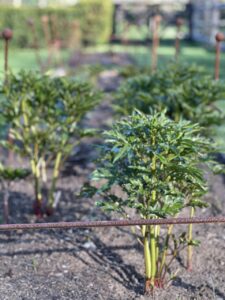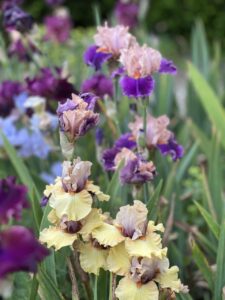Our Environment, Animal Tips & the Great Outdoors

Important Lessons for the Growing Season
I love the April environment edition of Main Street Magazine. For it means I get to shout my mantra as the headline and not have to bury it subtly in the text! Readers, flowers are meant to symbolize love, sympathy, joy, and celebration, not be the poster child for massive carbon footprints, with a sideline in social injustice. Yes, you imported flowers, grown in artificial conditions, doused in chemicals for growth and storage, refrigerated and flown, I’m talking about you!
Pom’s soapbox
Nobody loves a flower more than I do, but none of us should kid ourselves that just because it’s fragile and beautiful, it might not come with a huge environmental cost. An estimated 80% of the flowers sold in the US are imported from abroad. In 2022 that added up to $2 billion of cut flowers. The vast majority are grown with artificial heat and light, often taking a huge toll on local resources; produced with a high use of pesticides, fertilizers, and preservatives; refrigerated; and then flown. Not quite the natural beauties they may seem.
Adding insult to injury, and with grudging apologies for my floral snobbery, but we’re not even importing the good stuff. $800 million of this number is made up of cut roses alone and over $1.1 billion is carnations, chrysanthemums, and lilies. Why? Because we import only the flowers that can easily be grown in artificial conditions, easily harvested, easily stored for long periods of time, and easily transported out of water. Not the real beauties that dance in the vase, that smell insane, and whose fleeting ethereal charms make them completely cost-ineffective for mass production.
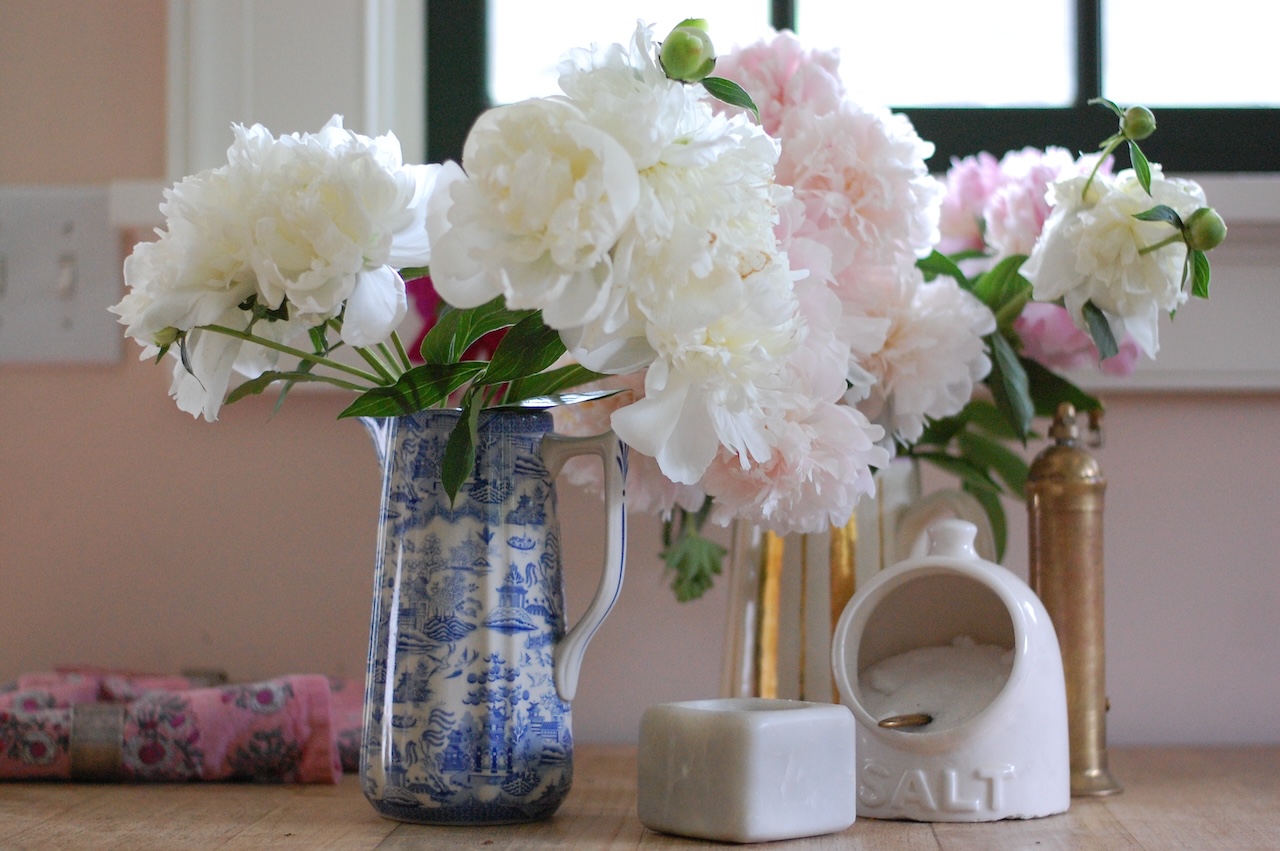
Awareness and change
The good news is that, like the gradual understanding of the evils of the single-use plastic grocery bag, there is now a growing awareness of not just the ecological costs of imported flowers but also the exponential joy and beauty of locally grown ones. Just as with farm-to-table food, we are relearning what our grandparents always knew. Seasonal, local produce – be it food or floral – always grows, looks, smells, lasts, and tastes better than its out-of-season, artificially produced rival.
There has been a groundswell of local flower growers offering their blooms for sale. It’s never been easier to source these with farmers’ markets, local flower subscriptions, and enterprising businesses seeing the cross-pollination benefits of supporting local flower farmers’ blooms alongside their own merchandise and services. 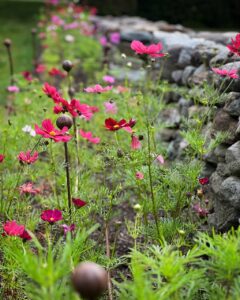
Do you know another way to experience the joy of having these dance on your home? Grow them yourself! Growing flowers does not require a PhD in horticulture. With a few nuggets of knowledge, a jug of beautiful homegrown joy-busting flowers on our tables is within all of our reaches.
The holy trinity
Before you start, think about where you are going to grow. Giving your plants the most favorable conditions will make this whole process so much more rewarding. Plants need three things: soil, sun, and water. Soil is crucial, sun is key, and water non-negotiable. Don’t worry about anything else. Just have these in place before you start.
Flowers can be grown in borders, raised beds, pots, or old trash cans and on gravel paths or window sills. Don’t imagine because your growing space doesn’t look like other people’s on Instagram, you too can’t grow beautiful flowers.
Perennials and annuals
The plants we are going to be planting this spring for flowers this year fall into two categories: perennials and annuals. How you plant and care for these two types of plants is very different. Not in the least bit hard, just different. Both can give you beautiful cut flowers.
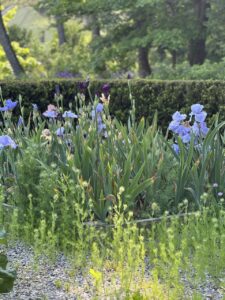 Consider perennials to be the guests that move in and never leave. Once in the ground, these plants will come back year after year. They are more expensive to buy but a great long-term investment. Examples include peonies, roses, and irises.
Consider perennials to be the guests that move in and never leave. Once in the ground, these plants will come back year after year. They are more expensive to buy but a great long-term investment. Examples include peonies, roses, and irises.
Annuals are your “just popping in and then I’ll be off again” friends. In our growing zone, sown from seeds in late winter/early spring, they will be the life and soul of the party all summer and then say farewell once Jack Frost arrives and knocks them out in the fall. Think poppies, sweet peas, nigella, and cosmos.
I like to think of perennials as the elegant prima ballerinas of the garden while annuals are my crazy summer disco queens. An easy way to tell them apart at the garden center or nursery is perennials are generally found outside in larger pots while annuals, which have just been grown this year, are found in seedling flats and trays in the protective warmth of a greenhouse or a hoop house.
Perennials are several years old and are, by nature, happy living outside all year round. They can be planted out as soon as your ground is workable. Annuals should not be left out uncovered overnight if there is any danger of frost. Here in Salisbury, CT, our last frost date is Memorial Day weekend.
Decide if you’re sowing from seed or buying seedlings
If you are growing annuals, you have a choice: sow your own or buy seedlings. There are pros and cons of each.
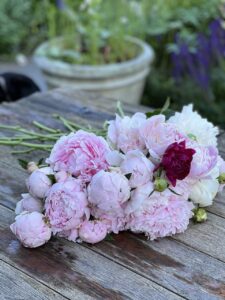
Pros of buying seedlings: for novice gardeners this may be the way to go in your early cut-flower career. It certainly was for me. It allows you to catch the bug of growing without the beginner’s stress of self-sown seedlings. The extra expense of buying someone else’s seedlings also has the advantage of avoiding the curse of many gardeners and a fast-track to failure – overexuberant, overplanting overwhelm!
Pros of sowing your own: the mind-blowing choice in varieties available. Cons: disappearing down a seed catalogue rabbit hole and ending up with a stress-inducing seedling NICU on constant triage, followed by the above-mentioned overwhelm. If sowing is the route you chose, please remember one thing and one thing only: start small, grow strong. You do not have to sow the whole packet!
Pinching, deadheading, and cut and come again
A couple of key gardening tricks will vastly increase the number of flowers you have available to cut. They may seem a little – or a lot – counterintuitive and may be slightly torturous to bring yourself to do but trust me here.
A lot of annuals will benefit from what is known as pinching. This is literally removing the top of the leading stem and upper leaves of a seedling when it gets to a certain height (usually between 8 and 12 inches). Sacrilege it may seem but it actually tells your seedling to send out lots more side shoots, all of which will turn into lovely extra flower stems perfect for cutting later.
The same theory can be applied to perennials and is known as the Chelsea chop. (The time to do this is in late May around the time of the world-famous Chelsea Flower Show in London – hence the name.) Same thing: give them a slightly painful haircut now and they will turn into lovely bushy plants, rather than skinny leaning/collapsing towers of Pisa later in the season.
The second trick is keep cutting! Many annuals are actually known as “cut and come again” varieties. The more you cut, the more flowers your plants will keep giving. Cutting stops the plants setting seed, which is the process that sends a message to the plants that it’s time to shut up shop for the year. The longer we can stave that off, the longer the plant will keep sending out blooms.
The same applies to deadheading, which is removing just the spent flower heads to prevent the seed setting process. So, keep cutting and deadheading, and your flowers will keep coming as long as the frost stays away, which can often be as late as November.
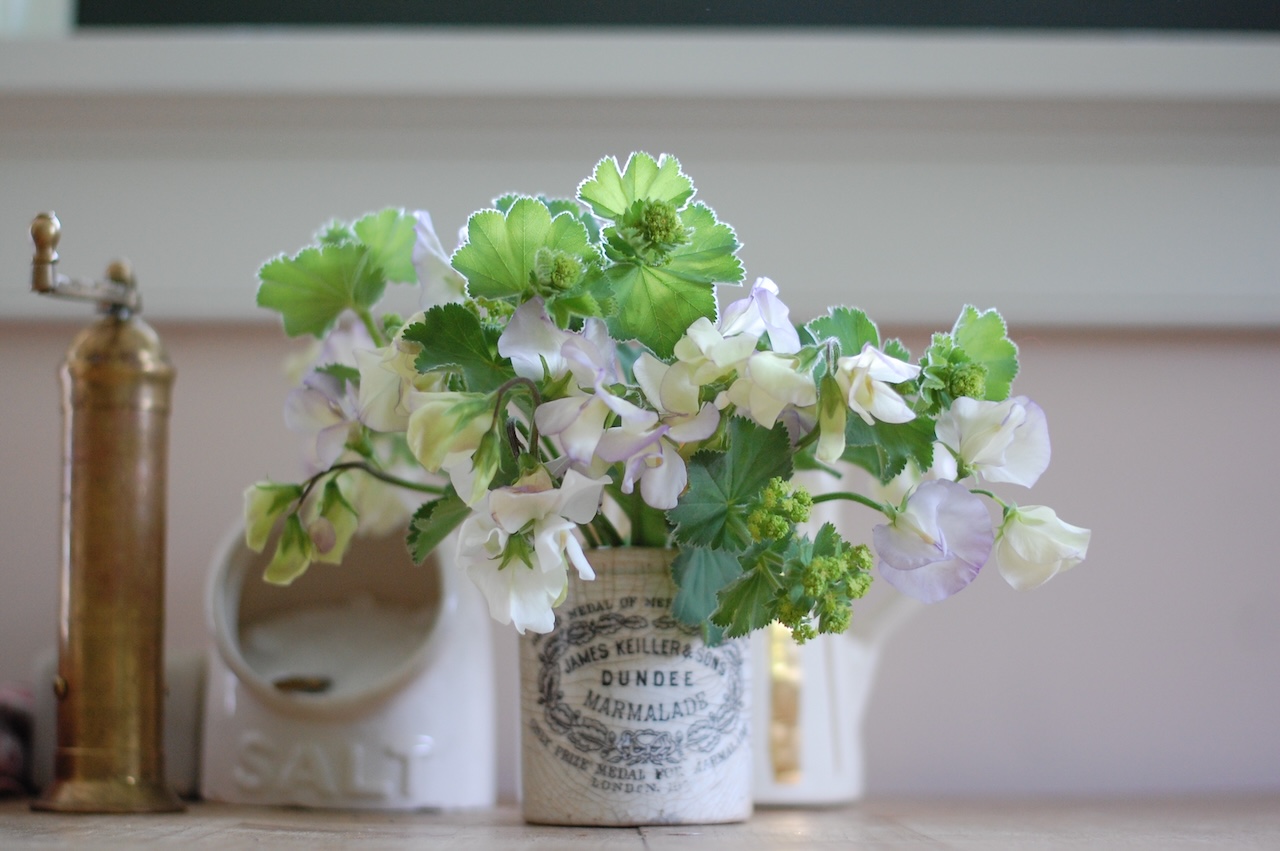
The most important lesson
One final tip: Do not lose the happiness in this. Learn to love the mess-ups, even – perhaps especially – the tray of dead seedings! See them as an opportunity to learn more. The best thing about gardening is it always gives us second chances. There will always be next year to try again. So, just remember, there are no real mistakes – just opportunities to learn to be kind, both to yourself and the planet. Happy growing! •
Pom Shillingford is an obsessive gardener originally from England and now based in Salisbury, CT. She offers seasonal cut flowers through English Garden Grown. Find her on Instagram @english_garden_grown.

